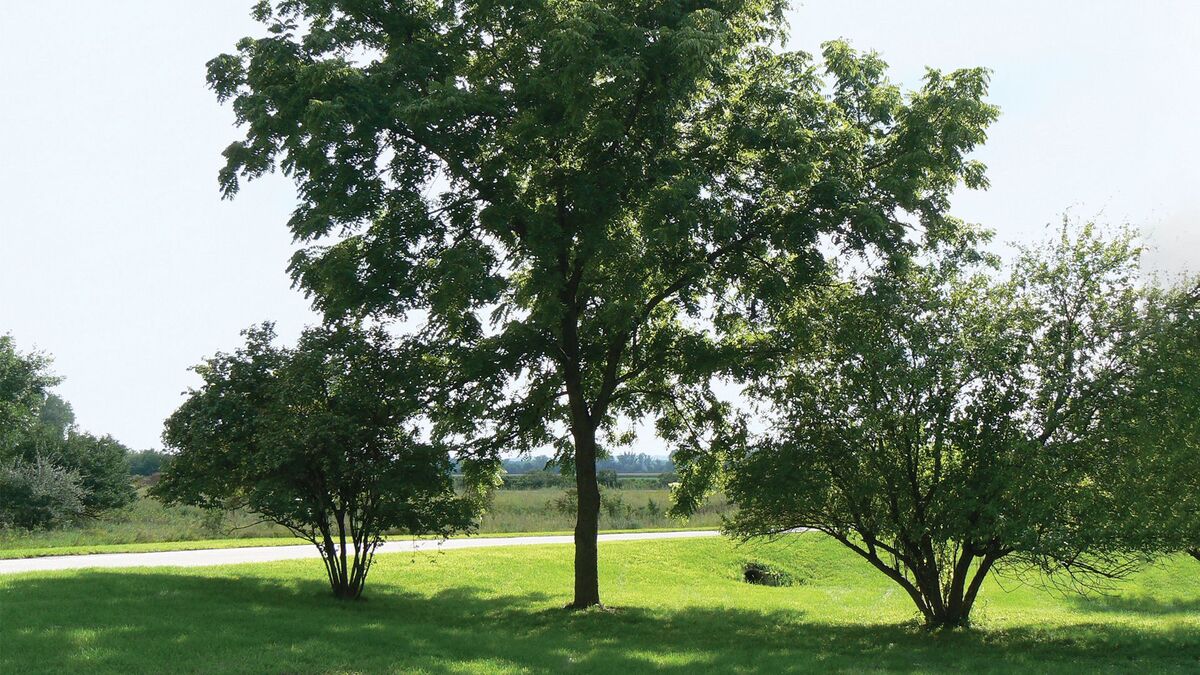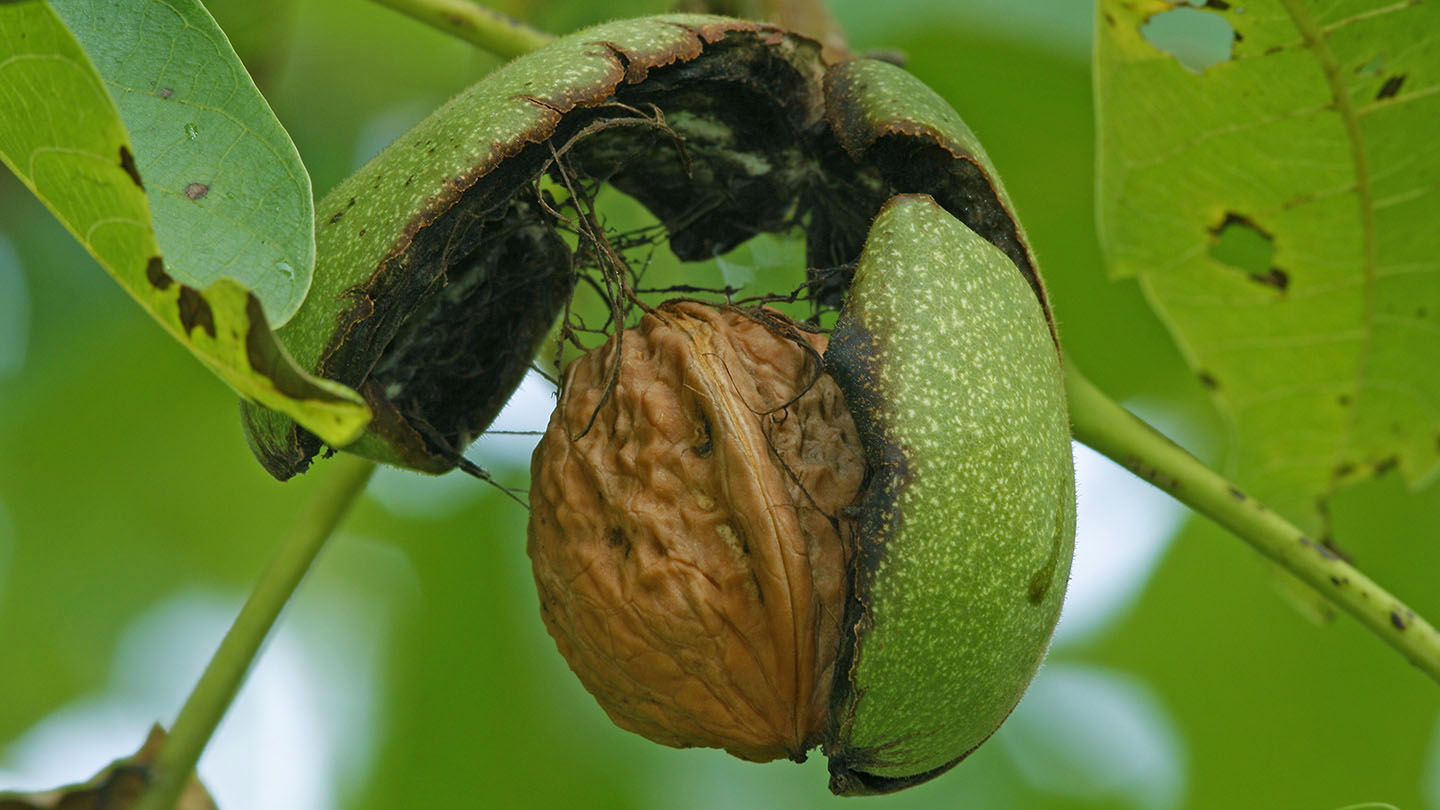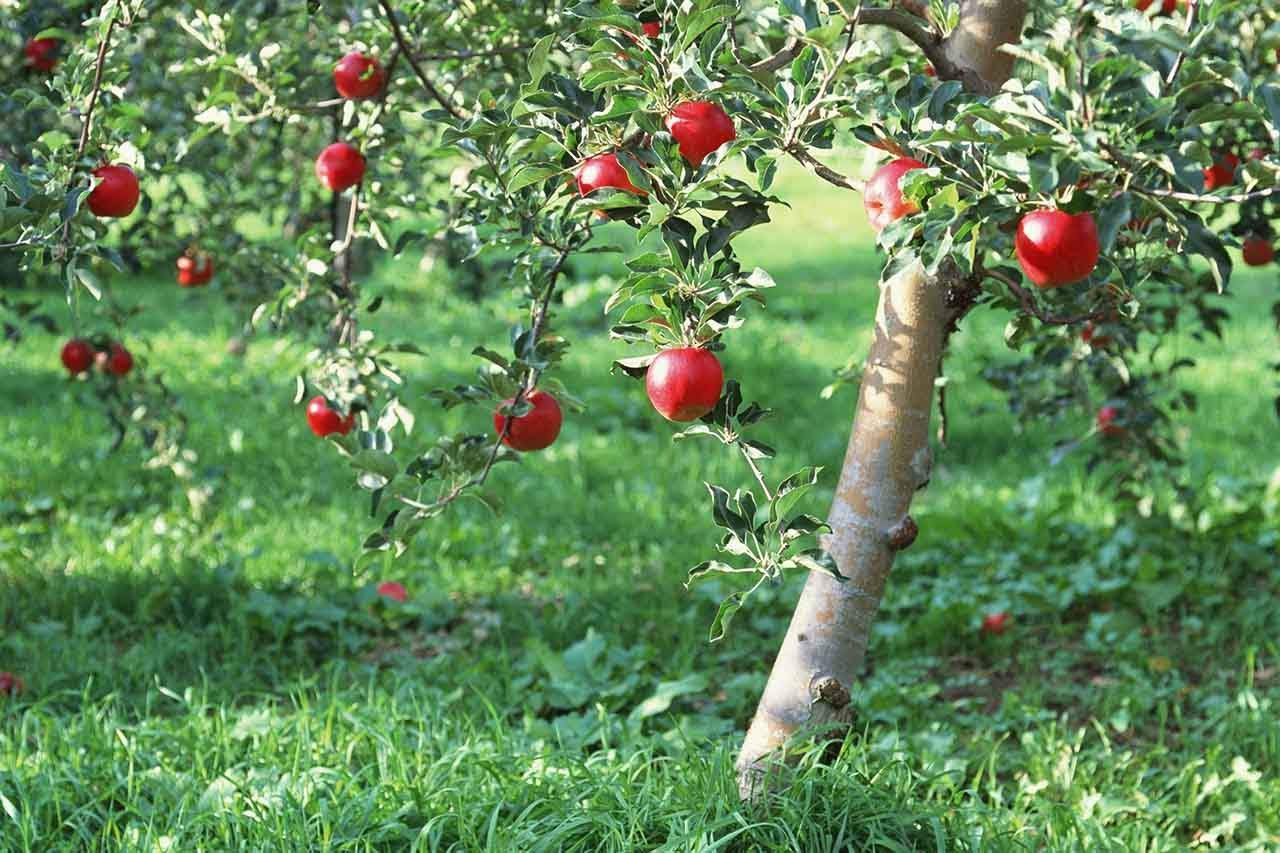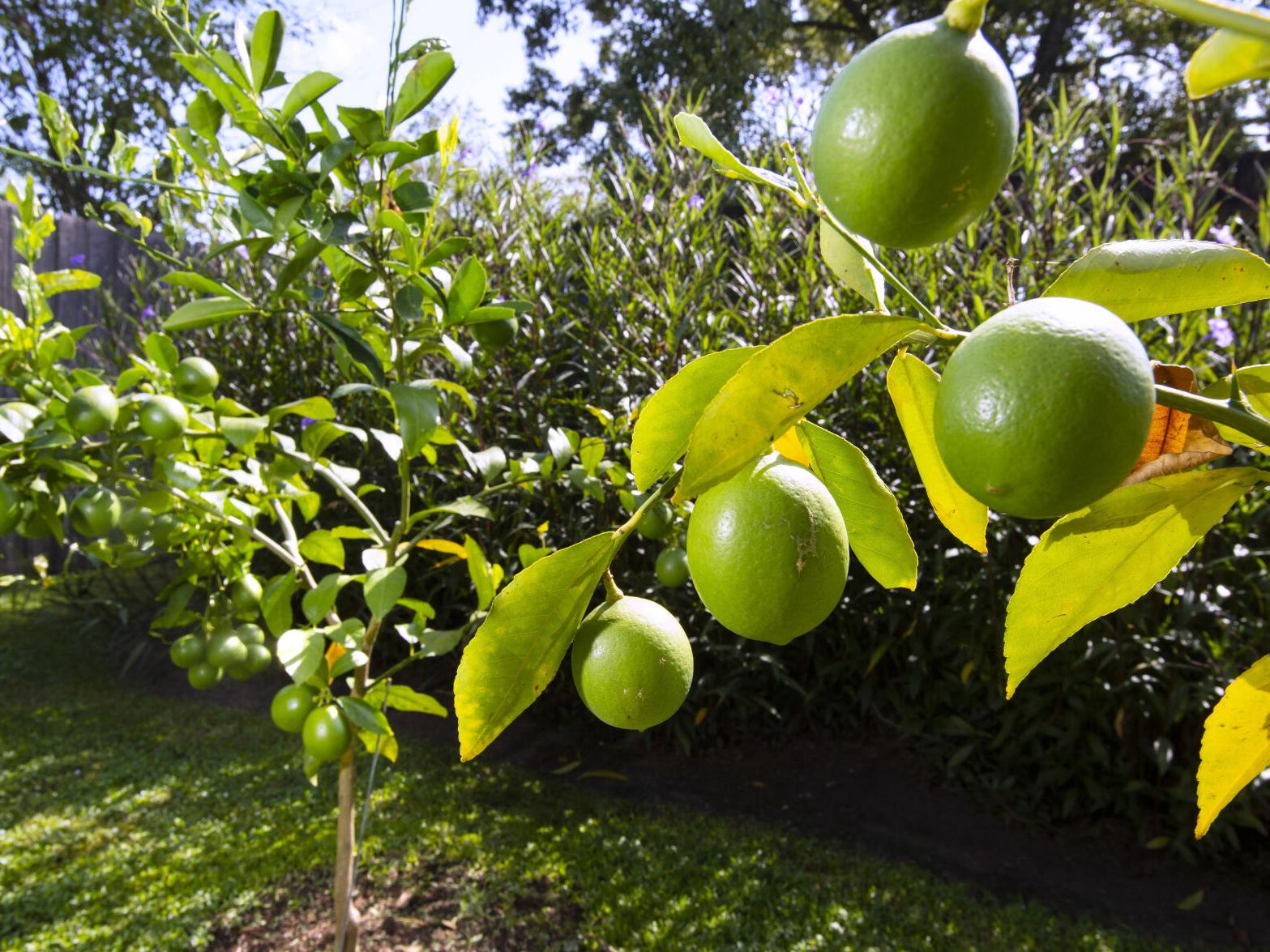Home>Gardening Techniques>Plant Care>How Fast Do Walnut Trees Grow


Plant Care
How Fast Do Walnut Trees Grow
Published: November 5, 2023
Learn about the plant care for walnut trees and discover how fast they can grow. Enhance your gardening knowledge and get expert tips for nurturing walnut trees.
(Many of the links in this article redirect to a specific reviewed product. Your purchase of these products through affiliate links helps to generate commission for Chicagolandgardening.com, at no extra cost. Learn more)
Table of Contents
Introduction
Walnut trees, with their majestic height and beautiful foliage, are not only a stunning addition to any landscape but also provide the added benefit of producing delicious and nutritious nuts. Whether you are a gardener looking to plant a walnut tree in your backyard or a farmer interested in cultivating a walnut orchard, understanding the growth rate of walnut trees is crucial.
Walnut trees belong to the Juglandaceae family and are known for their slow but steady growth. The growth rate of walnut trees can vary depending on various factors such as climate, soil conditions, and care. This article will discuss the key factors that influence walnut tree growth, the optimal climate and soil requirements, as well as provide insights on how to promote faster growth.
By delving into the fascinating world of walnut tree growth, you will gain valuable knowledge that will help you successfully cultivate and care for these magnificent trees. So, let’s explore the factors that affect walnut tree growth and learn how to maximize their growth potential.
Factors Affecting Walnut Tree Growth
Several factors play a vital role in determining the growth and development of walnut trees. Understanding these factors is essential for creating optimal growing conditions and ensuring healthy tree growth. Let’s explore the key factors that influence walnut tree growth:
- Genetics: The genetic makeup of a walnut tree greatly influences its growth potential. Different walnut tree varieties have varying growth characteristics, including height, spread, and susceptibility to diseases. When selecting walnut tree varieties, it is crucial to choose those that are well-suited to your climate and soil conditions.
- Climate: Walnut trees thrive in temperate regions with distinct seasons. They require a minimum of 900 chilling hours of temperatures below 45°F (7°C) in order to break dormancy and initiate bud growth. Additionally, walnut trees prefer mild summers with temperatures ranging between 70°F (21°C) and 90°F (32°C) for optimal growth.
- Soil Conditions: The quality and composition of the soil significantly affect the growth of walnut trees. Walnut trees prefer well-drained soil that is rich in organic matter. Sandy loam or loamy soils are ideal for their growth. Additionally, walnut trees prefer a slightly acidic to neutral pH range of 6.0 to 7.5. Conducting a soil test and making necessary amendments before planting is crucial for providing the best growing conditions.
- Light: Walnut trees thrive in full sun, requiring at least six to eight hours of direct sunlight per day. Adequate sunlight ensures vigorous growth, photosynthesis, and the production of energy necessary for the tree’s development. Planting walnut trees in a location with ample sunlight exposure will promote healthy growth and nut production.
- Water: While walnut trees are relatively drought-tolerant once established, consistent moisture is crucial during their early growth stages. Adequate watering promotes root development and overall growth. However, it is essential to balance water needs, as overwatering can lead to root rot and other diseases. Mulching around the base of the tree helps conserve moisture and maintain a more stable soil temperature.
By considering these factors and providing optimal growing conditions, you can ensure that your walnut trees thrive and reach their full growth potential. Now that we have explored the factors influencing walnut tree growth, let’s dive deeper into the specific climate and soil requirements for these magnificent trees.
Climate and Soil Requirements for Walnut Trees
Walnut trees require specific climate and soil conditions to grow and thrive. Understanding these requirements is crucial for providing optimal growing conditions and ensuring the successful cultivation of walnut trees. Let’s take a closer look at the climate and soil requirements for these magnificent trees:
Climate:
Walnut trees are well-suited to temperate regions with distinct seasons. They require a cool but not freezing winter period to undergo proper dormancy and prepare for spring growth. A minimum of 900 chilling hours, where temperatures drop below 45°F (7°C), is necessary for the tree to enter and break dormancy. However, extremely cold temperatures can damage or kill walnut trees, so it is essential to select varieties suitable for your specific climate zone.
Walnut trees also prefer mild summers with temperatures ranging between 70°F (21°C) and 90°F (32°C). This temperature range allows for optimal photosynthesis and overall tree growth. Areas with excessively hot summers or high humidity may not be suitable for walnut tree cultivation.
Soil:
The soil conditions play a vital role in the growth and development of walnut trees. Here are the key soil requirements for walnut tree cultivation:
- Drainage: Walnut trees thrive in well-drained soil and can suffer from root rot if left in waterlogged conditions. Avoid planting walnut trees in areas with poor drainage or heavy clay soils. Sandy loam or loamy soils with good drainage are ideal for their growth.
- pH Level: Walnut trees prefer slightly acidic to neutral soil conditions with a pH range of 6.0 to 7.5. Conducting a soil test will help determine the pH level of your soil and allow you to make necessary amendments to maintain the ideal pH range.
- Nutrient Content: Walnut trees thrive in soil that is rich in organic matter and nutrients. Prior to planting, it is recommended to amend the soil with well-aged compost or organic matter to improve the nutrient content and overall soil structure. Regular soil testing can also help determine if any specific nutrients are lacking and require supplementation through fertilization.
- Soil Texture: While walnut trees can adapt to a variety of soil textures, they tend to prefer sandy loam or loamy soils. These soil types provide good drainage and aeration, allowing the roots to establish themselves and access necessary nutrients and moisture.
By providing the ideal climate conditions and ensuring suitable soil composition, you can create a favorable environment for the growth and development of walnut trees. Now that we have explored the climate and soil requirements, let’s move on to understanding the germination and seedling growth process of walnut trees.
Germination and Seedling Growth
Germination is the first crucial step in the growth process of walnut trees. Understanding the germination and seedling growth stage is essential for successfully cultivating walnut trees. Let’s delve into the process of germination and the early growth stages of walnut trees:
Germination:
Walnut trees primarily reproduce through seeds. To initiate germination, fresh walnut seeds need to undergo a process called stratification. This involves exposing the seeds to a period of cold and moist conditions to break dormancy. The stratification period usually lasts around two to three months and can be done by placing the seeds in moist sand or peat moss in a refrigerator. After stratification, the seeds are ready for planting.
Seedling Growth:
Once the seeds have germinated, they will develop into seedlings. Here are some key aspects of seedling growth in walnut trees:
- Planting: When planting walnut seedlings, it is important to select a suitable location with proper climate and soil conditions. Choose an area with good drainage, full sun exposure, and adequate space for the tree to grow. Dig a hole twice as wide and deep as the seedling’s root ball, ensuring that the top of the root ball is level with the ground.
- Watering: During the first year of growth, young walnut trees require consistent moisture to establish their roots. Water the seedlings regularly, ensuring the soil remains evenly moist but not waterlogged. As the tree matures and develops a deeper root system, it becomes more tolerant of drought conditions.
- Protection: Protecting young seedlings from harsh elements, such as strong winds and excessive heat, is crucial for their survival. Stake the seedling if needed and consider providing temporary shade during hot summer months to prevent stress and sunburn.
- Pruning: Young walnut trees may benefit from light pruning to shape their growth and encourage a strong structure. Prune any damaged or crossing branches, making clean cuts just outside the branch collar. Avoid excessive pruning as it can impede growth.
- Weed Control: Regularly remove weeds around the base of the walnut tree to prevent competition for nutrients and water. Applying a layer of organic mulch can help suppress weeds and retain moisture in the soil.
By providing proper care and attention during the germination and seedling growth stages, you can set the foundation for healthy and vigorous walnut tree growth. Now that we have covered the germination and early growth stages, let’s explore the factors that influence the rate of walnut tree growth.
Early Growth Stages of Walnut Trees
The early growth stages of walnut trees are crucial for their long-term development and productivity. During this period, proper care and attention are essential to ensure healthy growth. Let’s take a closer look at the important aspects of the early growth stages of walnut trees:
Establishment:
After germination and seedling growth, the walnut tree enters the establishment phase. During this stage, the tree focuses on developing a strong root system and establishing itself in its growing environment. Here are some key considerations for the early growth stages of walnut trees:
- Watering: Young walnut trees require regular and consistent watering to support their root growth. Water deeply and thoroughly, ensuring that the soil around the tree is evenly moist. During dry periods, it may be necessary to water more frequently to prevent drought stress.
- Fertilization: Providing proper nutrition is essential during the early stages of growth. Applying a balanced, slow-release fertilizer formulated for trees can help supply the necessary nutrients for healthy development. Follow the manufacturer’s instructions for application rates and timing.
- Weed Control: Competition from weeds can hinder the growth of young walnut trees. Regularly check and remove weeds from around the base of the tree, taking care not to damage the delicate root system. Mulching can help suppress weeds and conserve soil moisture.
- Protection: Protecting young walnut trees from pests, diseases, and extreme weather conditions is crucial. Monitor the trees for signs of insect infestations or diseases and take appropriate actions if necessary. Providing temporary shade or windbreaks can help protect the young tree from strong winds or excessive sun exposure.
- Training and Pruning: Proper training and pruning during the early growth stages help shape the overall structure of the walnut tree. Train the main leader by staking it upright and prune away any competing or crossing branches. Aim for a balanced, open, and well-spaced branching structure to allow for good air circulation and light penetration.
By focusing on these aspects and providing proper care, you can ensure that the early growth stages of walnut trees set a solid foundation for healthy development. As the tree matures, it will grow and thrive, eventually reaching its maximum potential. Now let’s explore the factors that influence the rate of walnut tree growth.
Factors Influencing the Rate of Walnut Tree Growth
The rate of walnut tree growth is influenced by several key factors that contribute to their overall health and development. Understanding these factors can help you optimize conditions and promote faster growth. Let’s explore the factors that play a significant role in influencing the rate of walnut tree growth:
Genetics:
The genetic makeup of a walnut tree variety greatly impacts its growth rate. Different walnut tree varieties have varying growth characteristics, including height, spread, and overall vigor. When selecting walnut tree varieties for planting, consider those known for their faster growth rates and adaptability to your specific climate and soil conditions.
Climate:
The climate in which walnut trees are grown directly affects their growth rate. Walnut trees thrive in temperate regions with distinct seasons. They require a certain number of chilling hours during winter to break dormancy and promote healthy bud growth. A suitable summer climate, with moderate temperatures and adequate sunshine, allows for optimal photosynthesis and growth.
Soil Conditions:
The quality and composition of the soil greatly impact the growth rate of walnut trees. Optimal soil conditions include well-drained soil with a sandy loam or loamy texture. Walnut trees prefer slightly acidic to neutral soil with a pH range of 6.0 to 7.5. Adequate organic matter and nutrient content in the soil are also essential for promoting healthy growth.
Light Exposure:
Walnut trees require full sun exposure for optimal growth. They need at least six to eight hours of direct sunlight each day to undergo photosynthesis and produce the energy needed for growth. Insufficient sunlight can result in stunted growth and poor overall tree health.
Water Availability:
Adequate water availability is crucial for the growth of walnut trees. While walnut trees are relatively drought-tolerant, especially once established, consistent moisture during the early growth stages is essential. Proper watering, allowing the soil to remain evenly moist without waterlogging, helps support root development and overall growth.
Nutrition:
Providing the right nutrition is key to promoting faster growth in walnut trees. Applying a balanced fertilizer formulated for trees, at the appropriate time and dosage, can help ensure the tree has access to essential nutrients. Regular soil testing can also guide you in making any necessary adjustments to maintain optimal nutrient levels in the soil.
Pruning and Training:
Proper pruning and training techniques can shape the growth of walnut trees and promote a more efficient use of resources. Regular pruning helps maintain a balanced canopy, eliminates competing branches, and encourages new growth. Training the tree to have a strong central leader and an open branching structure allows for better light penetration and air circulation.
By considering these factors and providing optimal growing conditions, you can significantly influence the rate of walnut tree growth. It’s important to note that walnut trees are generally known for their slow but steady growth, and it may take several years for them to reach maturity and full production potential. With patience and proper care, you can foster healthy and vigorous growth in your walnut trees.
Average Growth Rate of Walnut Trees
Walnut trees are known for their slow but steady growth, and their average growth rate can vary depending on various factors, including the specific variety, environmental conditions, and cultural practices. Understanding the average growth rate of walnut trees can provide valuable insights into their development and help you plan and manage your orchard effectively.
On average, walnut trees can reach a height of 40 to 60 feet (12 to 18 meters) and a spread of 30 to 60 feet (9 to 18 meters) over their lifespan, which can span several decades. However, it’s important to note that the growth rate can differ significantly for different varieties.
In general, young walnut trees experience a more rapid growth rate in the first few years after planting. During this early establishment phase, the tree focuses on developing a strong root system and building its structure. Growth rates can vary but are commonly around 1 to 2 feet (30 to 60 centimeters) per year during this stage.
As walnut trees mature, their growth rate typically slows down. From mid-age to maturity, the annual height growth rate can range between 6 to 12 inches (15 to 30 centimeters). This moderate growth rate reflects the slow yet consistent development of the tree. It’s essential to be patient and understand that walnut trees are long-lived and can take 10 to 15 years or more to reach full maturity and production capacity.
Factors such as climate, soil conditions, and cultural practices can also influence the growth rate of walnut trees. Ideal growing conditions, including a suitable climate with the right amount of chilling hours during winter, well-drained soil rich in organic matter, and proper irrigation, can promote faster growth.
Pruning and training also play a role in shaping the growth rate and overall form of walnut trees. Regular pruning helps maintain a balanced canopy and eliminates competing branches, which can result in more efficient resource allocation and potentially faster growth.
It’s important to note that while walnut trees have a relatively slow growth rate, they are valued for their long-term benefits, including their beautiful foliage, shade provision, and, of course, the delicious and nutritious nuts they produce. By providing optimal growing conditions and practicing proper care and maintenance, you can promote healthy and sustainable growth in your walnut trees and enjoy their many benefits for years to come.
Promoting Faster Growth in Walnut Trees
While walnut trees are known for their slow but steady growth, there are several strategies you can employ to promote faster growth and achieve optimal development. By providing the right growing conditions, proper care, and implementing effective cultural practices, you can help your walnut trees reach their full potential more quickly. Here are some ways to promote faster growth in walnut trees:
Planting the Right Variety:
Choosing walnut tree varieties known for their faster growth rates and adaptability to your specific climate and soil conditions is a great starting point. Research and select varieties that are known for their vigor, productivity, and efficient use of resources to ensure faster growth.
Optimal Growing Conditions:
Creating optimal growing conditions is essential for promoting faster growth in walnut trees. Ensure they are planted in well-drained soil with a sandy loam or loamy texture and a slightly acidic to neutral pH range of 6.0 to 7.5. Provide adequate irrigation to support proper root development and overall growth.
Fertilization:
Supplying the right nutrients is crucial for promoting faster growth in walnut trees. Conduct regular soil testing to determine any nutrient deficiencies and apply balanced fertilizers specifically formulated for trees. Follow the recommended application rates and timing to ensure the tree has access to the necessary nutrients for healthy and vigorous growth.
Pruning and Training:
Regular pruning and training help shape the growth of walnut trees and optimize their growth potential. Prune during the dormant season to remove any dead, damaged, or crossing branches. Encourage an open and well-spaced branching structure, promoting better light penetration and air circulation throughout the tree.
Weed and Pest Management:
Keep the area around walnut trees free from competing weeds to eliminate competition for resources and promote faster growth. Implement effective weed management strategies, such as mulching and manual weed removal. Additionally, regular monitoring and prompt action against pests and diseases will prevent setbacks and allow the tree to focus on growth.
Irrigation:
Providing consistent and adequate irrigation, especially during dry periods, is crucial for faster growth in walnut trees. Young trees, in particular, require regular watering to establish their root systems. Be mindful of the water needs and ensure that the soil remains consistently moist without becoming waterlogged.
Regular Maintenance:
Maintain a regular maintenance routine that includes proper tree care practices. This includes monitoring the trees for any signs of stress or disease, promptly addressing any issues that arise, and providing regular inspections and care as needed to promote faster and healthier growth.
By implementing these strategies and providing optimal care and attention, you can promote faster growth in your walnut trees. It is important to remember that walnut trees still have a natural growth rate, and while these practices may help expedite growth, it is essential to be patient and understand that it may take several years for the trees to reach their full potential. With consistent effort and proper care, your walnut trees will reward you with not only faster growth but also bountiful harvests and a beautiful landscape presence.
Conclusion
Cultivating and caring for walnut trees requires a deep understanding of their growth patterns and specific needs. By considering factors such as genetics, climate, soil conditions, light exposure, water availability, nutrition, pruning, and more, you can create optimal growing conditions and promote healthy and faster growth in walnut trees.
While walnut trees are known for their slow but steady growth, selecting the right varieties, providing suitable growing conditions, and implementing effective cultural practices can help expedite their development. Patience, proper care, and regular maintenance are key to ensuring that your walnut trees reach their full potential and provide you with abundant harvests and a beautiful landscape presence.
Keep in mind that walnut trees are long-lived and may take several years to reach maturity and full production capacity. However, the benefits they offer, including their majestic appearance, shade provision, and delicious and nutritious nuts, make the wait worthwhile.
Whether you are planting walnut trees in your backyard or establishing a walnut orchard, incorporating the techniques discussed in this article will help you create an environment that fosters faster and healthier growth. Continuous learning and adapting to the needs of your walnut trees will enable you to achieve long-term success and enjoy the rewards of your efforts for years to come.








